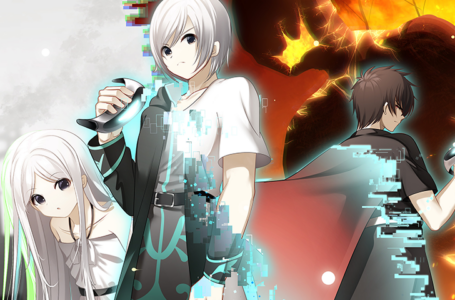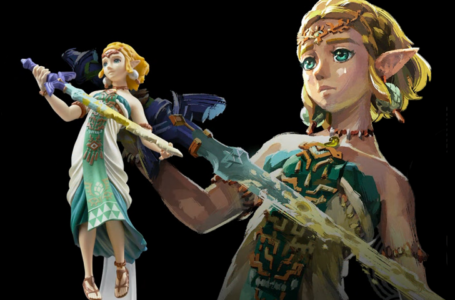Fiddling with Marble Maid’s balls
Marble Maid is one of those games that is clearly designed with such heart, soul and genuine-seeming enthusiasm that I feel kind of bad picking fault with it — but unfortunately its absolute worst feature is also one of its core game mechanics, and thus it finds itself placed squarely in “I really want to like this, but…” territory.
Marble Maid is one of a number of independently developed lewd games published by Shady Corner, developers of Shady Lewd Kart and passionate advocates for sexually explicit adult games on all platforms — not just PC. It originally came out on PC last year, but has just hit Nintendo Switch thanks to lewd-happy localisers eastasiasoft and, impressively, has much of its 18+ content intact, somehow attaining nothing more than a PEGI 16 rating in the progress.
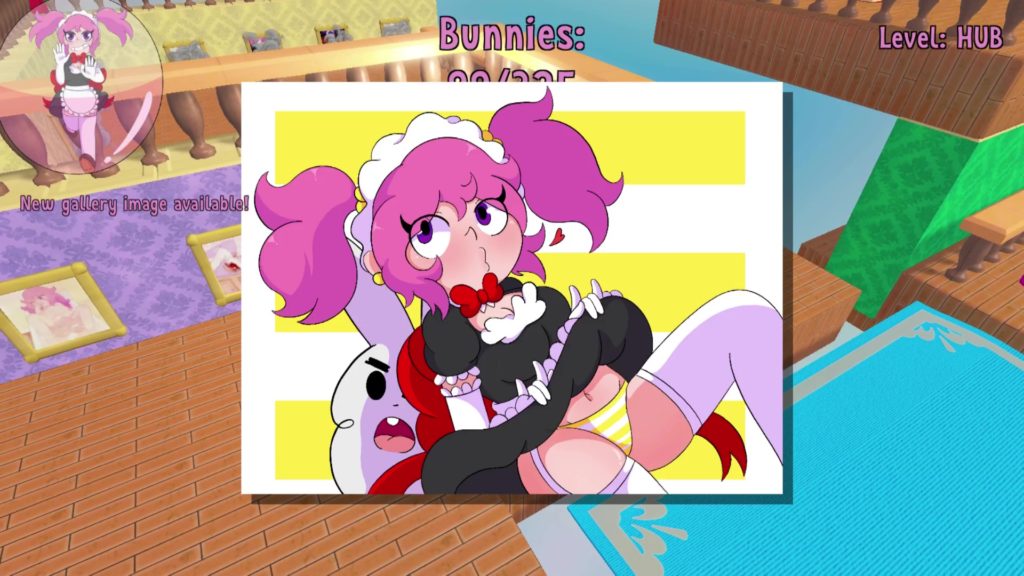
Indeed, most of the unlockable art you acquire for progressing through the game has bare boobs on full display — though nether regions tend to be obscured by one of the game’s “Dust Bunny” characters, making them even more annoying than they already are. But more on that in a moment.
In Marble Maid, you take on the role of Marble Maid, who has been given a contract to clean a dirty old house that, to put it mildly, is not what it seems. Not only is the entire house made out of physically improbable structures floating freely in space, but the filth has manifested itself as Dust Bunnies, little rabbit-like creatures that infest every room.
Your job in Marble Maid is simple: in each stage, you need to collect at least three out of the five available Dust Bunnies, then make it to the exit. You do this by rolling Marble Maid around in her marble, jumping over gaps and making use of her Dash ability to ascend slopes, skim over water and knock things around.
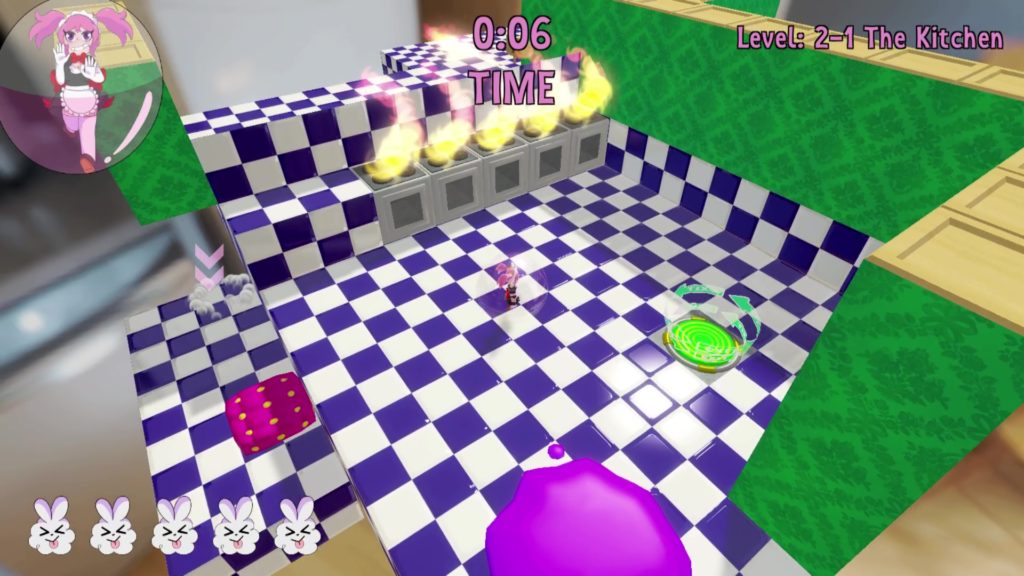
It’s more Marble Madness than Monkey Ball in that you control Marble Maid directly rather than tilting the level. Marble Maid’s controls do work well for the most part, featuring a sense of weight and inertia that feels very authentic to the Atari Games classic. The addition of a jump button makes getting around quite a bit easier, and the Sonic-style Dash means you don’t need to find creative ways to get a run-up before ascending a slope.
The levels are varied and interesting, with plenty of different hazards based on the theme of the “world” you’re presently exploring in the house. The initial hallway world is pretty simple, but then subsequent worlds introduce new considerations. The kitchen, for example, features spinning plate platforms, ovens that will burn you, toasters that will bounce you around and puddles of sticky goo that will slow you down. The bathroom, meanwhile, introduces water hazards, which you typically need to skim across by dashing at an appropriate speed.
There are also some well-implemented “dark” levels, which you have to negotiate by making out vague shapes in the darkness and carefully picking your way from light source to light source, since reaching a new lamp illuminates the surrounding area for a short period. There’s a fun sense of tension in these levels as you hope and pray that the platform you think you’re rolling along continues in the direction you think it does — and you’ll soon get wise to some common tricks.
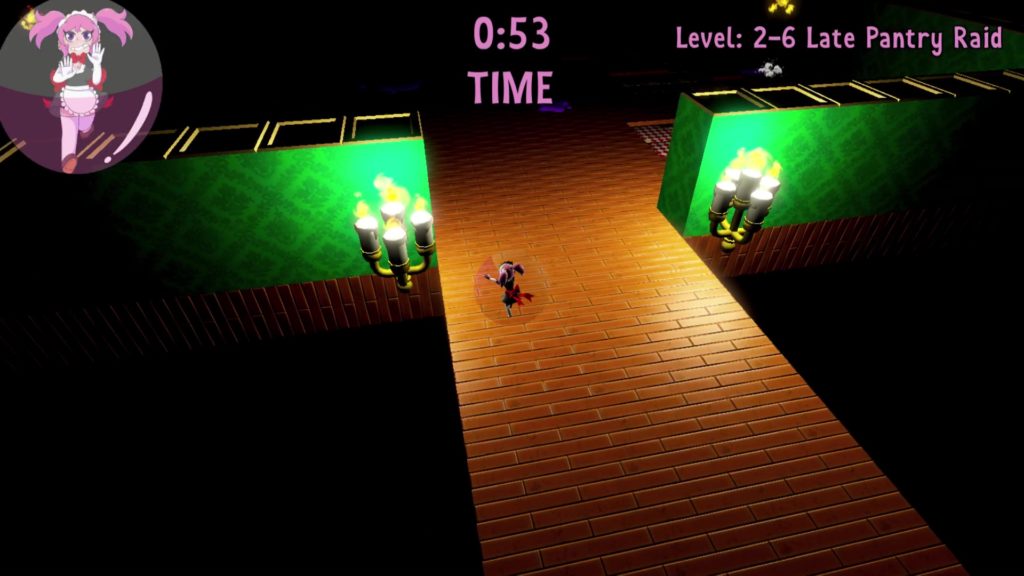
At the end of each world is a boss fight, which usually (though not always) requires you to bash your marble-rolling rival Nega Maid off the edge of a stage three times. While sometimes frustrating, these battles break things up nicely and make a fun change from the rolling and platforming action.
So where does it all fall apart? Well, it’s with those damned Dust Bunnies. They don’t sit still, by which I mean the moment you get anywhere vaguely near them they zip off in the exact opposite direction to you at what is basically your maximum possible speed under normal circumstances. They’re dumb as shit, too, meaning that they’ll simply continue to run in the exact opposite direction to you as much as possible, even falling off the edge of platforms if that happens to be where their escape route leads them. This causes them to respawn at their original location.
As you can probably imagine, chasing down a Dust Bunny only for it to fall off a ledge and reset back to its original position is quite annoying. It’s even more annoying when you return to that original position only for the same thing to happen again, and again, and again. Eventually, the most reliable strategy becomes to force Dust Bunnies to go charging off an edge, then position yourself on their spawn spot to grab them as soon as they reappear. While effective, I can’t help but feel this probably wasn’t what the game designers intended.
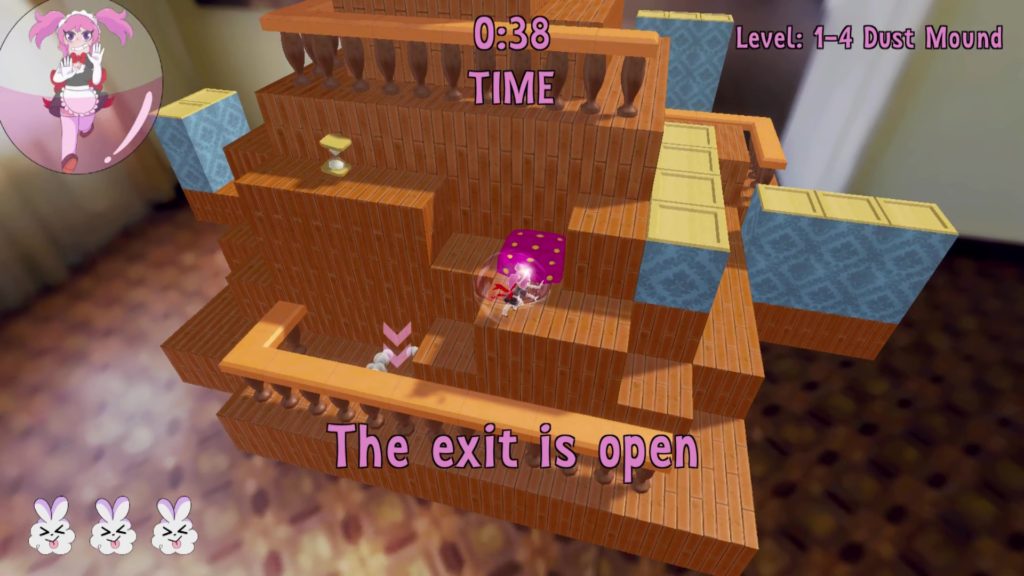
This is already an issue with Marble Maid’s gameplay, but it’s compounded by the tight time limits on each stage. You really do not have very much margin for error on each stage right from the outset of the game, and that’s a bit of a shame — there’s a lot of levels and a lot of Dust Bunnies to collect, so the game could have afforded to take a much more gradual difficulty curve rather than starting difficult and only getting harder from there.
Absolute worst of all are those boss fights, though. While the Nega Maid battles themselves are quite fun, in order to actually finish a boss stage you have to collect the Dust Bunnies that pop out from your defeated foe and then get to the exit. And by the very nature of the Nega Maid battles, those Dust Bunnies appear in the dead centre of a platform that is designed to be fallen off in absolutely every direction, making it near-impossible to chase them down — particularly if your battle against your rival has left you short on time. In other words, you absolutely can fail a boss level even after beating the boss.
Marble Maid would have been a much better game if the Dust Bunnies were simple static collectibles scattered in creative and fiendish places around the level. Indeed, each stage in the game features two “secret” Dust Bunnies who are asleep and thus don’t move; had all the Dust Bunnies been like that, the game would have been considerably more enjoyable.
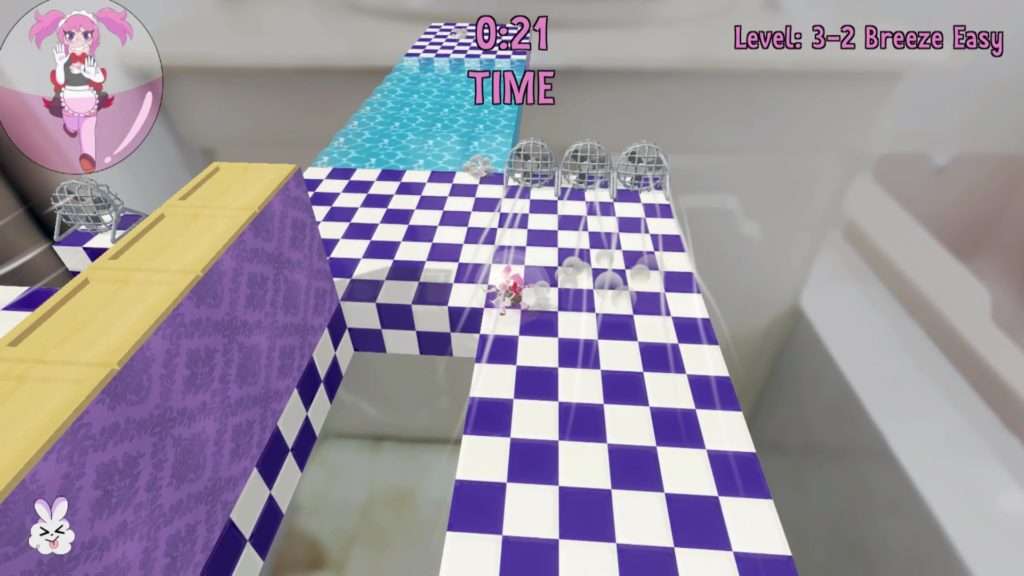
Alternatively, Marble Maid could have run with the “cleaning” theme and taken a sort of “reverse Splatoon” approach, where areas of the level were covered with grime, and you need to roll over them to clean them. Both of these approaches would have allowed for the solid and creative level design already seen in Marble Maid as it exists, but made the core gameplay that much more enjoyable.
I hasten to add that Marble Maid isn’t utterly beyond redemption. Even with my annoyances over those fucking Dust Bunnies, I still found myself playing it for quite some time every time I settled down for a session. As previously noted, the sense of enthusiasm that the game was developed with constantly shines through; it’s just a shame that the overall execution and mechanical design didn’t quite match that enthusiasm.
It’s hard to wholeheartedly recommend Marble Maid, then; it’s by no means a complete disaster, but it’s hard not to feel that it could have been so much better with just a couple of little tweaks here and there.
Marble Maid is available now for Nintendo Switch. Thanks to eastasiasoft for the review copy.
Join The Discussion
Rice Digital Discord
Rice Digital Twitter
Rice Digital Facebook
Or write us a letter for the Rice Digital Friday Letters Page by clicking here!
Disclosure: Some links in this article may be affiliate links, which means we may earn a small commission if you make a purchase after clicking on them. This is at no additional cost to you and helps support Rice Digital!
- Letter from the Editor: passing the torch - June 30, 2023
- Super Woden GP 2 is looking promising - June 30, 2023
- Inti Creates is making a 32 bit-style Love Live action platformer - June 26, 2023





